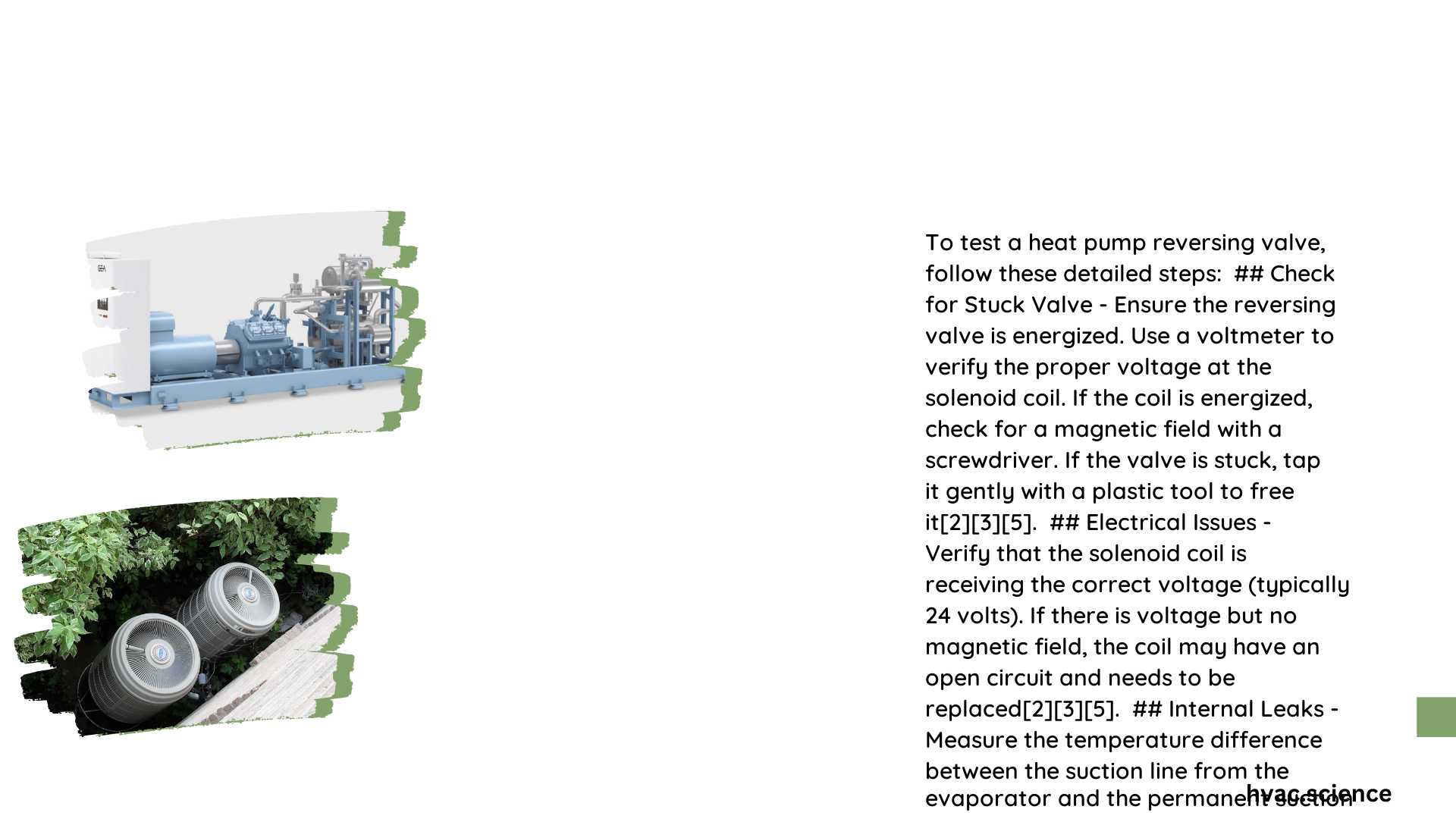A heat pump reversing valve test is a critical diagnostic procedure that evaluates the functionality of a crucial component responsible for switching between heating and cooling modes. Technicians use specialized electrical, pressure, and temperature measurements to determine valve performance, identifying potential issues that could compromise system efficiency and overall heat pump operation.
Why Perform a Heat Pump Reversing Valve Test?
Heat pump systems rely on precise refrigerant flow management, making the reversing valve a critical component. Understanding its functionality and conducting systematic tests can prevent potential system failures and maintain optimal performance.
What Tools Do You Need for Testing?
| Tool | Purpose | Recommended Specifications |
|---|---|---|
| Voltmeter | Electrical connection verification | 0-50V range |
| Temperature clamps | Measuring line temperatures | Accuracy within ±1°F |
| Pressure gauges | Checking system pressure differentials | 0-500 PSI range |
How to Conduct Electrical Checks?
- Voltage Verification
- Confirm 24V supply at solenoid coil
- Use voltmeter for precise measurement
-
Check for consistent electrical connection
-
Magnetic Field Assessment
- Hold small screwdriver near coil
- Verify magnetic attraction when energized
- Absence indicates potential coil failure
What Are Critical Temperature Measurements?
Temperature differentials provide crucial insights into reversing valve performance:
- Heating Mode Checks
- Measure suction line temperatures
- Maximum acceptable difference: 3°F
-
Compare outside and bottom valve temperatures
-
Cooling Mode Evaluation
- Assess discharge and suction line temperatures
- Ensure temperature variations within 4°F range
How to Diagnose Common Reversing Valve Issues?
Stuck Valve Symptoms
- Reduced heating/cooling capacity
- Inconsistent temperature regulation
- Unusual system cycling
Troubleshooting Techniques
- Gentle tapping with plastic tool
- Verify electrical connections
- Check for internal refrigerant leaks
What Pressure Ranges Indicate Proper Operation?
Acceptable pressure differentials:
– Minimum: 30 PSI
– Maximum: 70 PSI
– Indicates proper valve mechanism function
When Should You Replace the Reversing Valve?
Replace if:
– Temperature differentials exceed recommended ranges
– No magnetic field present during energization
– Persistent performance inconsistencies
– Visible physical damage
Pro Tips for Accurate Testing
- Always disconnect power before testing
- Use calibrated measurement tools
- Document all test results
- Compare findings with manufacturer specifications
Potential Consequences of Neglecting Valve Tests
- Reduced system efficiency
- Higher energy consumption
- Inconsistent indoor temperature
- Potential complete system failure
Conclusion

A systematic heat pump reversing valve test requires technical expertise, precise measurements, and comprehensive diagnostic approach. Regular testing ensures optimal system performance and prevents costly repairs.
